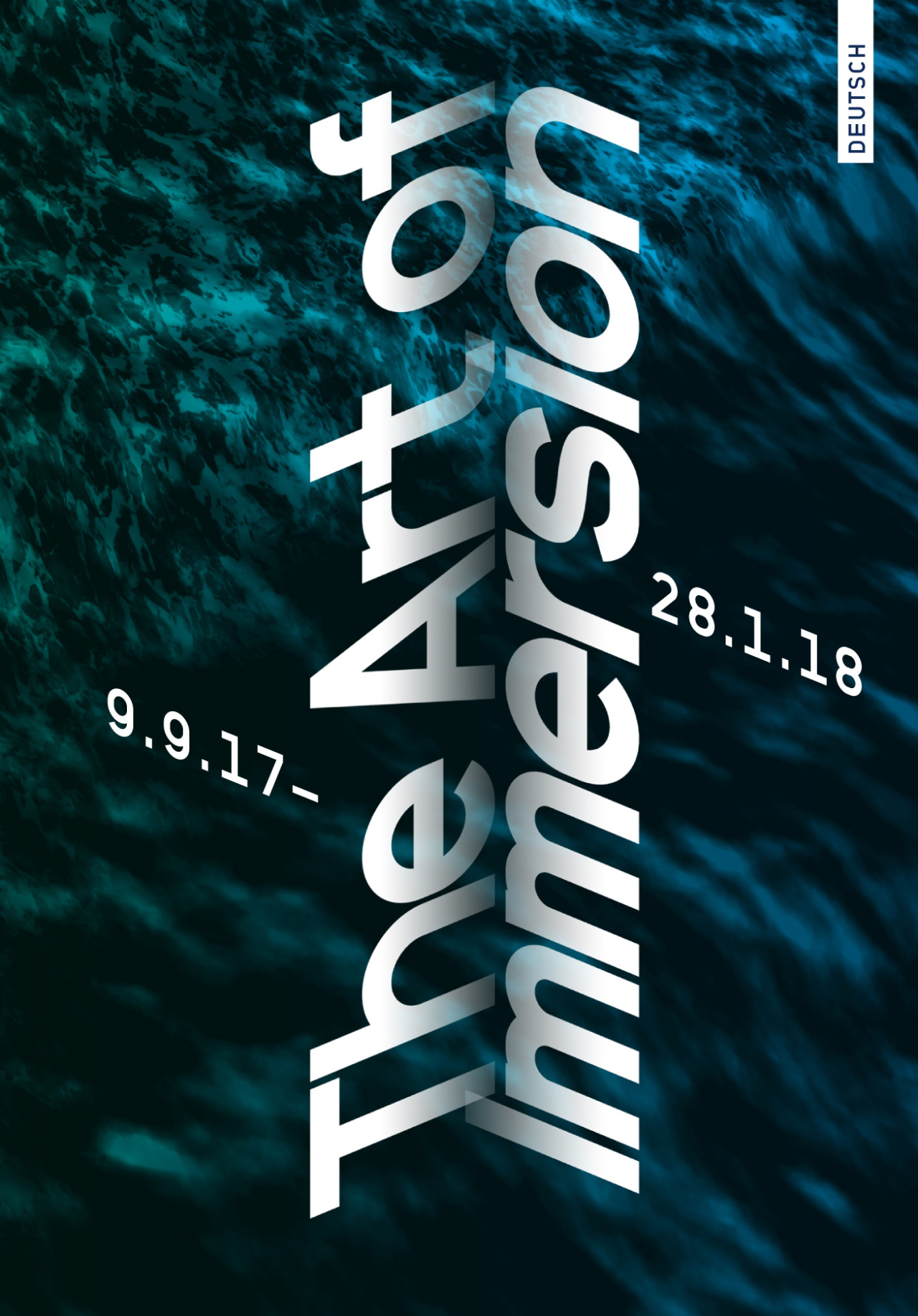- Exhibition brochure
The Art of Immersion
2017
- Type of publication
- Exhibition brochure
- Publishing house, place
- ZKM⎪Zentrum für Kunst und Medien Karlsruhe
- Physical Description
- 56 pp., ill., brochure
- Language
- German
- Year
- 2017
- Content
_________________________________
The Art of Immersion
Preface
The first traces of human visualization, that is cave paintings, are evidently conceived as representations of the environment and its inhabitants. The image appeared as a concept of representation. But we have to distinguish between the idea of the image and the technical carrier medium of the image. The media of the first human-made images were the rock and the wall. Over the centuries the idea of the image migrated from one technical guest medium to the next, from wall to canvas. Within this dynamics of different guest media the technical properties and features of the image changed as well.
The fresco painting was panoramic and life-size, whereas the canvas painting was just a window into the world, even a frozen window, a small frame. It is worth noting that already Leon Battista Alberti instructed painters in his De pictura (1435) to consider the frame of the painting as an open window. Over the last 500 years the metaphor of the image as a window remained a leading concept: from painting to photography to the TV set and video monitor to film and, last but not least, to the computer screen, which is conceived as a window even more since “windows” became the brand name for well-known graphical operating systems. Our latest digital technology has enabled us to expand the concept of the image by new technical carrier media into many directions. Cinema was the first visual medium that could imitate motion. This was the most important breakthrough in the history of the image as simulation of life: living organisms are distinguished by the fact that they move, whereas the dead are motionless. The images started to move. Therefore, they have been referred to as moving images. Since in the beginning the cinema could only depict “life” in black and white instead of simulating it in vivid colors, the next step led to color film. Yet something was still missing from real life, since film was still silent film. Therefore, the next step was sound film. Beginning in the 1930s, we had moving images with sound and color, like in real life. But again, the film screen was still a small window, so cinema extended its frame, its screen, in various formats such as CinemaScope, VistaVision, Circle-Vision 360°, the dome system OMNIMAX, and so on. With digital technology as technical carrier the character of the image changed most radically and could better than ever before simulate reality. Just like in a real-life environment the viewer can interact with the image in a digital virtual environment. The viewer can participate, interact with, and navigate through the image space, sometimes even in a three-dimensional way, like in real space.
With panoramic projections cinema became a virtual environment, and thus resembles our real sensory environment much more than ever before. Cinema became truly immersive. With the moving images and the spectators, who can now also keep their bodies in motion and move around freely while they interact with the image, the cinematographic imaginary triumphs as an acoustic and visual immersive environment. So, what are the effects of the carrier media of our state-of-the-art imagery today and what metaphors are there to conceptualize these images? Are we still intrigued by the view through a window frame or are we stepping through the doorway of a multi-sensory virtual environment? We are back to a highly technological simulation of cave paintings, that is, of representations of our environment and its inhabitants, but we are now ourselves the first-time inhabitants of our own images. The sensual experience of the art of immersion is the actual peak of cinematographic imaginary because it is the art of performing in an almost perfectly simulated environment. The art of immersion describes the transition from the visual window, in all its historical formats, into a virtual environment.
Peter Weibel
______________________________
